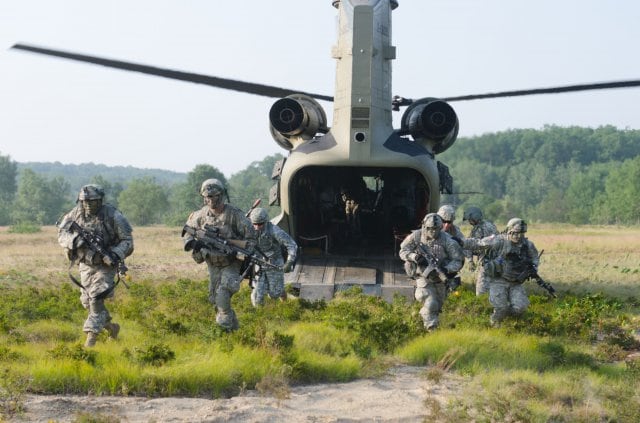The Army is being forced to sacrifice modernization in favor of readiness even as America's enemies become increasingly capable, senior leaders testified Tuesday on Capitol Hill.
"Our competitive advantage we've continually banked on is decreasing, [and] the Army risks losing its qualitative overmatch in future conflicts," said Lt. Gen. H.R. McMaster, director of the Army Capabilities Integration Center. "With the 74 percent decrease in Army modernization total obligation authority since 2008, the risk to mission and soldiers is increasing."
This risk is compounded by the growing demand for land forces around the world, McMaster told the Senate Armed Services Committee's Airland subcommittee.
"We're having a harder and harder time for the small force to keep pace with the demand," he said.
He added that the Army is "behind in modernization against current and future threats," and "we have no current major ground combat vehicle in development," which is why the Army's Abrams tanks and Bradley Fighting Vehicles likely will remain in the Army's inventory for the next 50 to 70 years, even after they're obsolete.
Another critical area where the Army is lagging behind is cyber and electronic warfare, McMaster said, citing the ongoing conflict in Ukraine as a "real wake up call."
The Army's fiscal 2017 budget request prioritizes readiness and assumes risks in modernization, said Lt. Gen. Michael Williamson, the military deputy in the Office of the Assistant Secretary of the Army for Acquisition, Logistics and Technology.
"Due to resource constraints, we simply cannot modernize the entire force with the most modern equipment," he said. "Therefore, we must do so selectively."
The service also is "continually modifying equipment to extend its service life," including with the UH-60 Black Hawk, AH-64 Apache and CH-47 helicopters, and the M109 Paladin, Williamson said.
"We cannot put our soldiers at risk without the right equipment at the right time in the right place to accomplish their mission," he said.

The Army continuously updates its CH-47 Chinook helicopters to extend its service life, even as the service is forced to cut is modernization budget. Here, soldiers with 1st Brigade Combat Team, 10th Mountain Division rush out of a CH-47 during a training exercise.
Photo Credit: Sgt. Grant Matthes/Army
To mitigate many of these challenges, the Army needs "long-term, sustained and predictable funding," said Lt. Gen. Joseph Anderson, the deputy chief of staff for operations (G-3).
"We assume risk by reducing end-strength, delaying modernization," he said. "These tradeoffs mortgage our future readiness."
Balancing end-strength, readiness and modernization is a "fundamental issue" for the Army, said Lt. Gen. John Murray, deputy chief of staff for Army programs (G-8).
"It's a balancing act, and I'm more concerned about the cumulative risk than I am with one budget," he said.
When asked about the size of the Army — the active Army is slated in 2018 to reach an end-strength of 450,000, down from a wartime high of 570,000; and the overall total Army is supposed to number 980,000 — the generals all agreed that any move by Congress to stop the drawdown must be accompanied by the appropriate funding.
Without the right funding, "it could be disastrous," McMaster said, adding that it typically costs about $1 billion for every 10,000 soldiers.
Such a move would force the Army to choose between properly training and equipping its soldiers with slowing down modernization even further, Murray said.
"If you increase the number of soldiers without an increase in the top line, we will ensure the readiness of our soldiers, so modernization will take another hit," he said. "It would slow down production to the minimum sustainment rate and further decrement [military construction]. It makes the problem we have right now even worse."
It also is much easier to retain a capability than have to rebuild it, McMaster said.
When the Army grew its brigade combat teams during the height of the war, it was "a 31-month ordeal" to build an armored brigade combat team from scratch, Murray said.
The Army must be able to maintain ready land forces that can deploy rapidly and transition quickly into conducting operations, McMaster said.
"These land forces have to have mobility, they have to have protection, they have to have lethality," he said. "A lot of times you'll hear the term 'light and nimble.' Well, Richard Simmons is light and nimble, and we don't send him to go do harm to somebody."
Michelle Tan is the editor of Army Times and Air Force Times. She has covered the military for Military Times since 2005, and has embedded with U.S. troops in Iraq, Afghanistan, Kuwait, Haiti, Gabon and the Horn of Africa.




